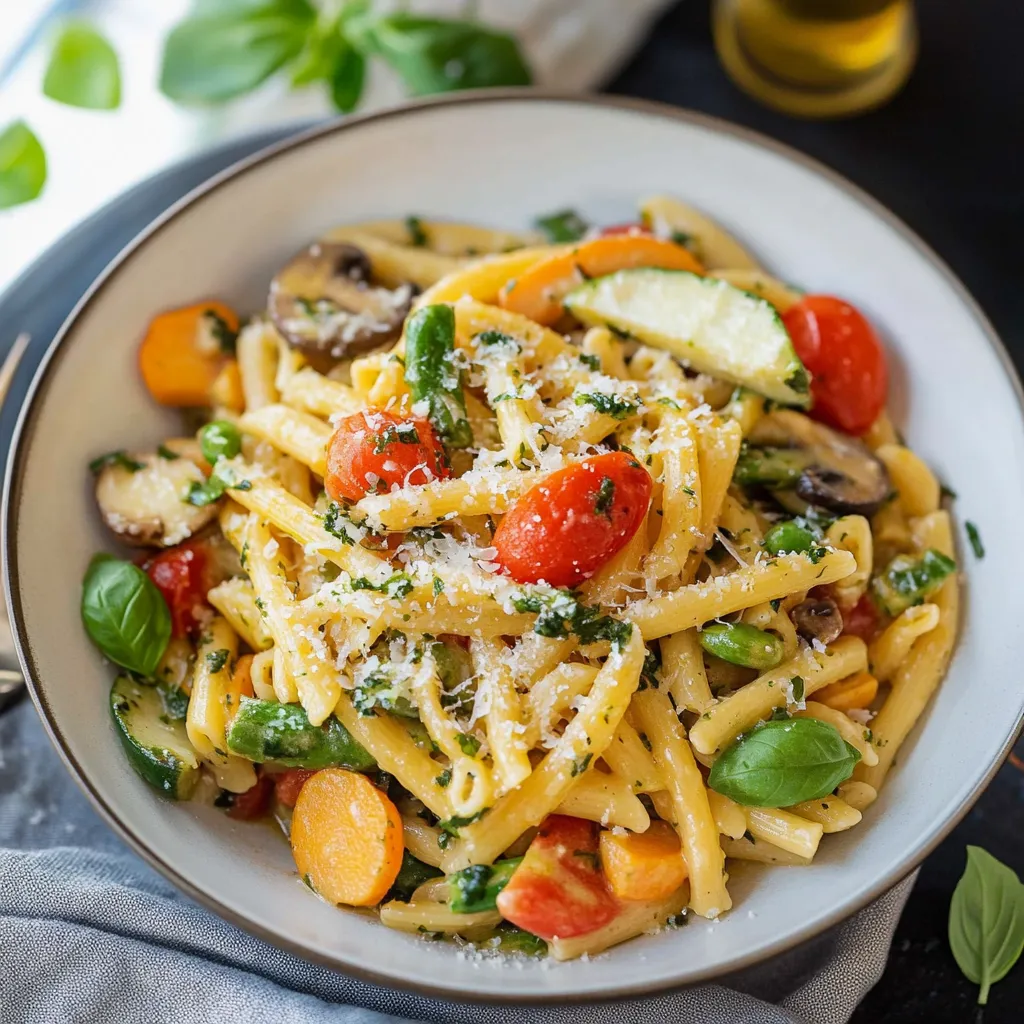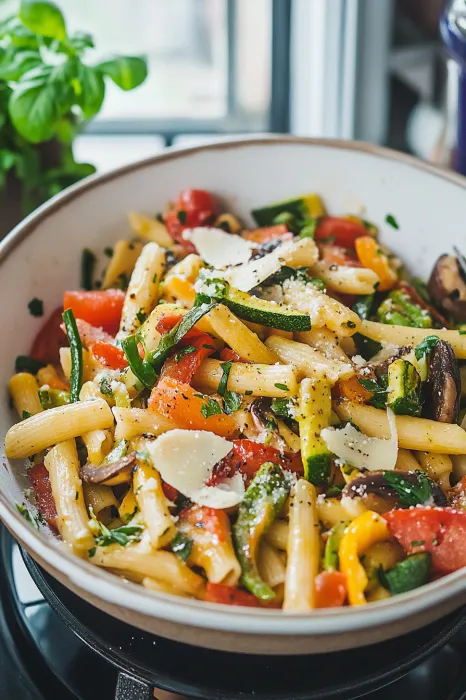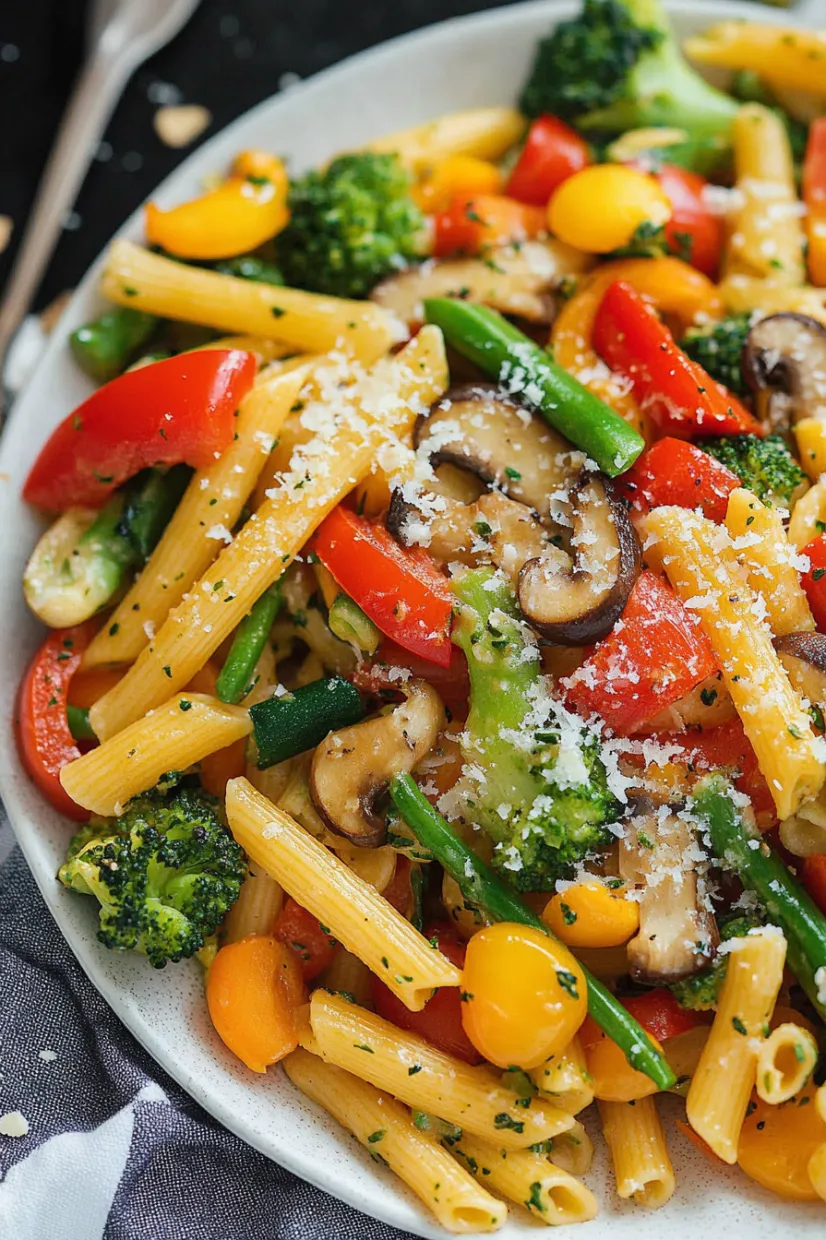 Pin it
Pin it
This vibrant pasta primavera celebrates the bounty of fresh vegetables in a delicate butter and lemon sauce. I created this recipe when my garden was overflowing with summer produce, and it quickly became our go-to dinner for those warm evenings when you want something satisfying without feeling heavy.
I first made this pasta primavera for a casual dinner with friends who were skeptical about a vegetable-forward pasta. By the end of the meal, everyone was asking for the recipe and commenting on how the simple preparation really highlighted each vegetable's flavor.
Ingredients
- Fresh vegetables: Bell peppers, zucchini, mushrooms, and red onion create a colorful medley with different textures
- Penne pasta: Holds up well to the vegetables and catches the light sauce in its ridges
- Unsalted butter: Forms the base of the silky sauce while letting you control the saltiness
- Fresh garlic: Adds aromatic depth that dried simply cannot match
- Lemon juice: Brightens the entire dish and balances the richness of the butter and cheese
- Parmesan cheese: Provides that umami quality that ties everything together
- Fresh parsley: Adds a pop of color and herbaceous finish
Step-by-Step Instructions
- Cook the Pasta:
- Fill a large pot with water, add a generous tablespoon of salt, and bring to a rolling boil. Add penne and cook according to package directions until al dente, usually 10 to 11 minutes. Reserve half a cup of pasta water before draining. This starchy water is liquid gold if you need to loosen your sauce later.
- Sauté the Vegetables:
- While pasta cooks, heat olive oil in a large skillet over medium high heat until shimmering. Add bell peppers, zucchini, mushrooms, and red onion all at once. Cook for 6 to 8 minutes, tossing frequently. You want the vegetables to soften slightly but maintain their vibrant colors and some crispness. Season with salt and pepper which helps draw out moisture and flavor.
- Create the Sauce:
- Reduce heat to medium to prevent burning the garlic. Add butter and let it melt completely before adding minced garlic. Cook for exactly one minute, stirring constantly. The garlic should become fragrant but not brown, which would make it bitter. The butter will begin to coat the vegetables creating the base of your sauce.
- Combine and Finish:
- Add the drained pasta to the skillet along with fresh lemon juice and grated parmesan. Toss everything together until the pasta is well coated and the cheese begins to melt. If the mixture seems dry, add a splash of the reserved pasta water to create a silkier sauce. Taste and adjust seasoning as needed.
 Pin it
Pin it
The secret to this dish's success lies in not overcooking the vegetables. I learned this after years of making soggy primavera until an Italian friend scolded me for cooking the life out of my beautiful produce. Now I aim for vegetables that still have some bite to them, which provides a wonderful textural contrast to the tender pasta.
Seasonal Variations
This primavera recipe shines brightest when you adapt it to what's in season. In spring, try asparagus, peas, and early zucchini. Summer calls for cherry tomatoes, eggplant, and colorful bell peppers. Fall versions work beautifully with butternut squash, kale, or brussels sprouts. The technique remains the same, just adjust cooking times based on the vegetables you choose.
Make It Ahead
If preparing this dish for guests, you can cook the pasta and vegetables separately up to a day ahead. Refrigerate them in separate containers, then combine and reheat everything in a large skillet with a splash of water or broth. Add the butter, garlic, lemon, and cheese just before serving to maintain the fresh flavors and prevent the sauce from breaking.
Protein Additions
While perfect as a vegetarian main, this primavera readily welcomes protein additions. For a classic approach, add grilled chicken breast cut into strips. Seafood lovers might appreciate sautéed shrimp or scallops added just before serving. Plant based eaters can toss in white beans or chickpeas for a protein boost that complements the vegetables without overpowering them.
 Pin it
Pin it
Frequently Asked Questions
- → What vegetables work best for Pasta Primavera?
A variety of vegetables work, including bell peppers, zucchini, mushrooms, red onions, asparagus, or cherry tomatoes. Customize based on what’s in season.
- → Can I make this dairy-free?
Yes, substitute the butter with olive oil or a plant-based alternative, and use a vegan Parmesan or skip the cheese entirely.
- → How do I store and reheat leftovers?
Store leftovers in an airtight container in the fridge for up to 3 days. Reheat gently on the stove or microwave, adding a splash of water or broth to loosen the sauce.
- → Can I add protein to this dish?
Absolutely! Add grilled chicken, shrimp, or chickpeas to make it a more filling meal.
- → Can I use a different type of pasta?
Yes, you can use any pasta such as spaghetti, fusilli, or rigatoni. Opt for whole wheat or gluten-free pasta for dietary preferences.
